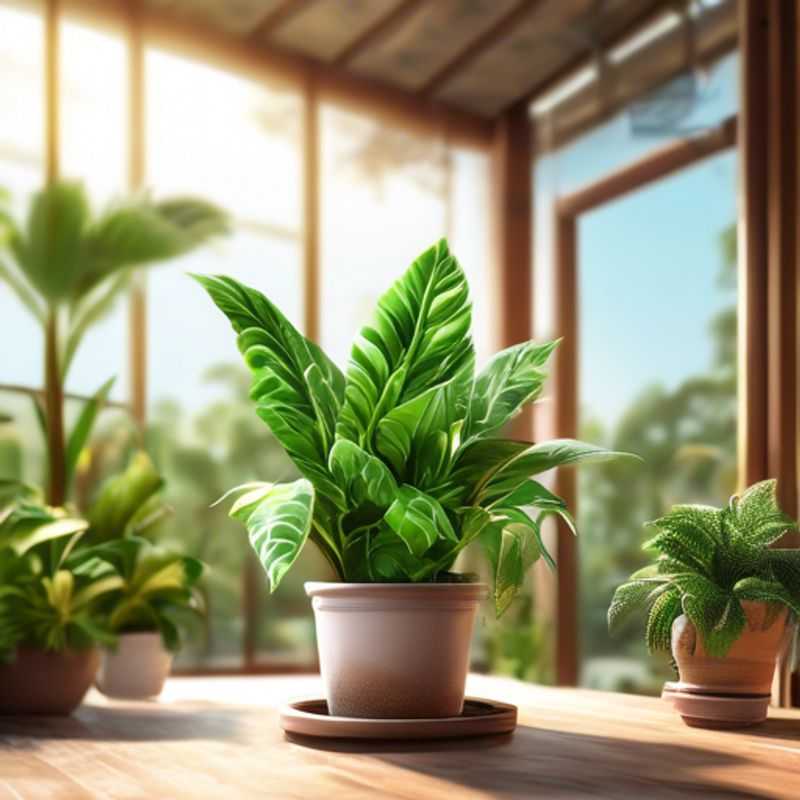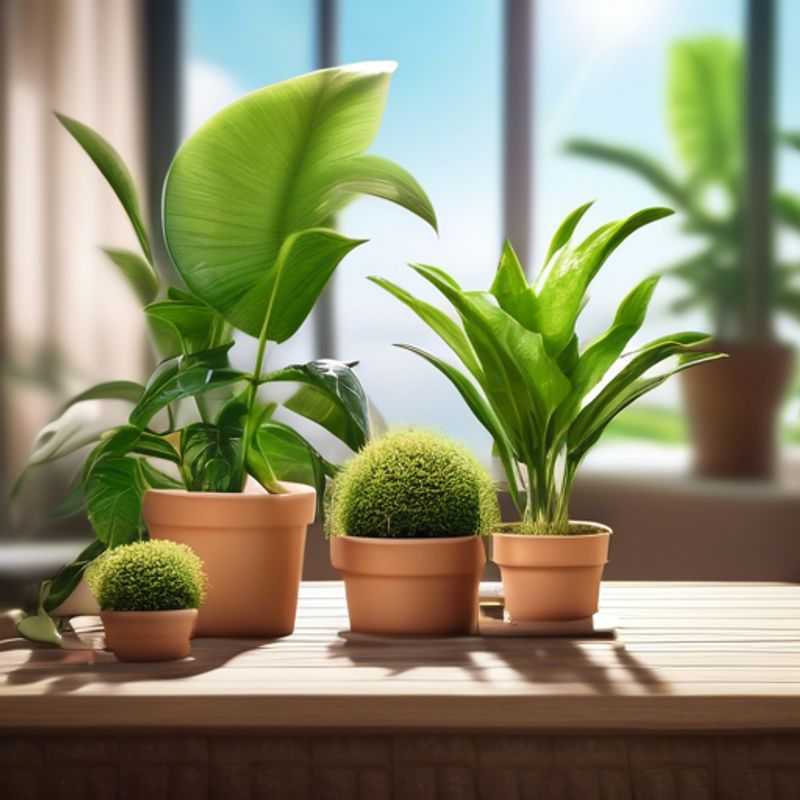7 Tips to Know About Top Things to Know Before Buying House Plant Fertilizer

7 Tips to Know Before Buying House Plant Fertilizer: Understanding Different Types, Specific Needs, Labels, Application, Organic Options, pH Levels, and Timing
Bringing life into your home with houseplants is rewarding, but keeping them thriving requires the right nourishment.

Understanding Plant Fertilizers: A Guide to Different Types and Uses
Understanding the different types of plant fertilizers and their intended uses is crucial for ensuring healthy plant growth. Here’s a quick breakdown to help you choose the right fertilizer for your needs:
Nitrogen (N): Essential for leaf growth and green color. Look for fertilizers with higher nitrogen content for leafy greens, vegetables, and lawns.
Phosphorus (P): Key for root development, flower production, and fruit development. Use phosphorus-rich fertilizers for flowering plants, fruiting plants, and root crops.
Potassium (K): Vital for disease resistance, overall plant health, and stress tolerance. Choose potassium-rich fertilizers for plants prone to disease or growing in challenging conditions.
NPK (Nitrogen, Phosphorus, Potassium): These are the three primary nutrients often found in a combined form on fertilizer packaging. Numbers on the packaging represent the percentage of each nutrient, for example, 10-10-10 means 10% nitrogen, 10% phosphorus, and 10% potassium.
Organic fertilizers: Composed of natural materials like compost, manure, and bone meal. They release nutrients slowly, improving soil structure and fertility. They are a good option for long-term soil health.
Synthetic fertilizers: Man-made fertilizers that release nutrients quickly. These are often cheaper and readily available, but can deplete soil nutrients over time.
Slow-release fertilizers: Designed to release nutrients gradually over time, reducing the need for frequent applications. These are ideal for busy gardeners or those who want to minimize environmental impact.
When selecting fertilizers, always consider the specific needs of your plants, soil type, and budget. Reading the label carefully and consulting with a local garden center can help you make informed decisions and achieve optimal plant growth.

Tailoring Fertilizer: Matching the Right Nutrients to Your Houseplants
Choosing the right fertilizer is crucial for your houseplants' health. Each plant has unique nutritional needs, so it's important to select a fertilizer tailored to their specific requirements. Consider the plant's species, its age, and the growing medium.
A balanced fertilizer with NPK ratios (Nitrogen, Phosphorus, Potassium) is generally recommended for most houseplants. Nitrogen promotes leaf growth, phosphorus aids root development, and potassium supports overall plant health.
Slow-release fertilizers are a good option for houseplants as they provide nutrients gradually over a longer period, reducing the risk of over-fertilizing. You can also opt for organic fertilizers made from natural ingredients, like compost or manure, which are eco-friendly and improve soil quality.
Always follow the fertilizer instructions carefully and avoid over-fertilizing. Too much fertilizer can burn the roots and damage your plants.
Regularly monitor your plants' growth and adjust your fertilizer routine accordingly. If you notice deficiencies, consider supplementing with specific nutrients or using a different fertilizer.
Remember, a little bit of care goes a long way in keeping your houseplants thriving. By choosing the right fertilizer and following a consistent routine, you can provide your plants with the nutrients they need to grow strong and healthy.

Decoding Nutrition Labels: Getting the Right Nutrients for You
Reading food labels is a crucial step in making informed choices about your diet. While some labels may seem overwhelming, understanding key elements can help you make healthier and more informed decisions.
Serving Size: This is the amount of food the label refers to, and it’s essential for accurately calculating calories, macronutrients, and micronutrients. You may need to adjust the information based on how much you actually eat.
Calories: These represent the energy content of the food. Use this information to help track your daily calorie intake, especially if you’re managing your weight.
Macronutrients: This includes fat, carbohydrates, and protein. Pay attention to the types of fat (saturated, unsaturated, trans), as well as the breakdown of carbohydrates (sugars, fiber).
Micronutrients: These are vitamins and minerals essential for health. Look for labels that provide information on vitamins A, C, D, and E, as well as minerals like calcium, iron, and potassium. Check for added sugars.
Ingredients: The ingredients list is crucial for identifying potential allergens or additives. Pay attention to the order of ingredients, as the first listed is the most prevalent.
Percent Daily Value (%DV): This indicates how much of a nutrient a serving contributes to your daily needs. Use this information to compare different products and make choices based on your individual dietary requirements.
Remember, these are just a few essential components of food labels. For a deeper understanding of food nutrition, consult with a registered dietitian or healthcare professional.

Avoid Over-Fertilizing: Follow Application Instructions for Healthy Growth
Over-fertilizing is a common problem that can damage your plants and harm the environment. Follow the recommended application instructions on fertilizer labels to avoid this issue. These instructions are tailored to the specific needs of each plant and consider factors like soil type, climate, and plant growth stage. The instructions typically specify the amount of fertilizer to apply and the frequency of application.
When you over-fertilize, you create a buildup of salts in the soil, which can make it difficult for plants to absorb water and nutrients. This can lead to stunted growth, yellowing leaves, and even plant death. Over-fertilizing can also contribute to water pollution as excess nutrients leach into waterways, causing algae blooms and harming aquatic life.
To avoid over-fertilizing, start by using a slow-release fertilizer, which releases nutrients gradually over time. Always consider soil testing for a more precise understanding of your soil's nutrient content. Knowing your soil's needs allows you to choose the right fertilizer and apply the appropriate amount. Never fertilize when the soil is dry, as this can lead to fertilizer burn.
It's also a good idea to water your plants deeply after applying fertilizer to help the nutrients penetrate the soil. Lastly, if you are unsure about how much fertilizer to use, always err on the side of less. You can always add more later, but you can't take it back if you over-fertilize.

Going Green: Sustainable Gardening with Organic and Natural Fertilizers
Opting for organic or natural fertilizers is a key step towards more sustainable gardening practices. These fertilizers, derived from natural sources like compost, manure, and plant-based materials, offer numerous advantages over synthetic fertilizers.
Firstly, they enrich the soil with beneficial microorganisms that improve soil structure and nutrient retention. This leads to healthier plants with stronger roots and increased disease resistance. Secondly, organic fertilizers release nutrients slowly, providing a sustained supply to plants throughout the growing season. This reduces the need for frequent applications and minimizes nutrient runoff into waterways.
Moreover, organic fertilizers avoid the use of harmful chemicals that can pollute the environment and harm beneficial insects. This creates a healthier ecosystem for both your garden and the surrounding environment. While the initial cost of organic fertilizers may seem higher, they often prove more economical in the long run due to their sustained effectiveness and reduced need for repeated applications.
When choosing organic fertilizers, it's essential to consider the specific needs of your plants. For instance, compost is a versatile option for general garden use, while manure provides additional nitrogen for leafy greens. Furthermore, it's crucial to apply organic fertilizers correctly to maximize their benefits. Follow the product instructions and consider using soil tests to determine the optimal nutrient levels for your garden.

Fertilizer pH: Understanding the Impact on Your Plants
Understanding fertilizer pH is essential for optimal plant growth. It's crucial to know that plants thrive within specific pH ranges, and fertilizers can significantly affect soil pH.
Fertilizers often contain acidic or alkaline components, which can alter the soil's pH. Acidic fertilizers lower soil pH, while alkaline fertilizers raise it. If your soil pH is too high or too low, nutrient availability for your plants can be compromised.
Key points to consider:
• Acidic fertilizers: Commonly used for acid-loving plants such as blueberries, azaleas, and rhododendrons.
• Alkaline fertilizers: Beneficial for plants that prefer alkaline soil, like many vegetables and herbs.
To maintain optimal soil pH:
• Regular soil testing is crucial: This allows you to monitor pH levels and adjust accordingly.
• Choose the right fertilizers: Select fertilizers specifically formulated for the type of plants you are growing.
• Consider pH amendments: If your soil's pH is too high or too low, you can use amendments like lime to raise pH or sulfur to lower it.
Remember, maintaining proper soil pH is a continuous process that can lead to healthier and more productive plants.

Maximize Your Lawn's Growth: When to Fertilize for Best Results
The best time to apply fertilizer depends on the type of plants you're growing and your local climate. Generally, spring and fall are the optimal times for most plants. In spring, fertilizer helps plants get a strong start after winter. In fall, it helps plants build up reserves for winter and encourages healthy root development.
However, some plants, like cool-season grasses, benefit from fertilization in late summer or early fall. Check your local agricultural extension office or online resources for specific recommendations for your region and plant types.
Remember to choose fertilizers based on your soil's needs and the type of plants you're growing. Applying too much fertilizer can harm plants and pollute the environment. Read the label carefully and follow the recommended application rates.
Consider using slow-release fertilizers for a longer-lasting effect. These fertilizers gradually release nutrients over time, reducing the need for frequent applications.
